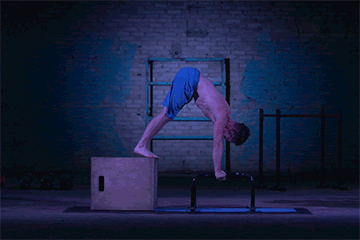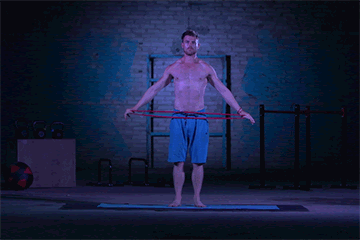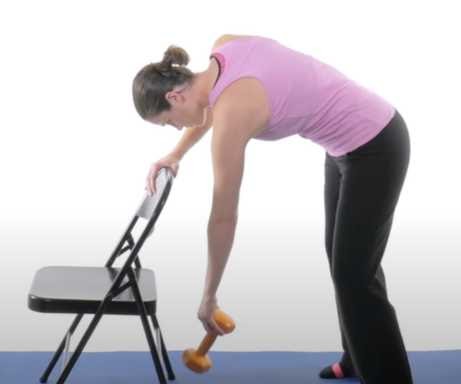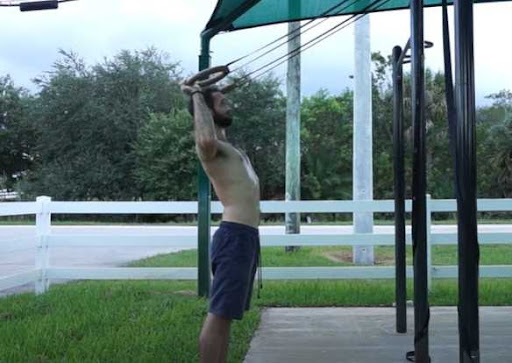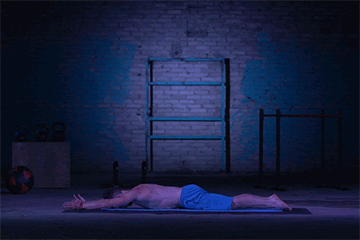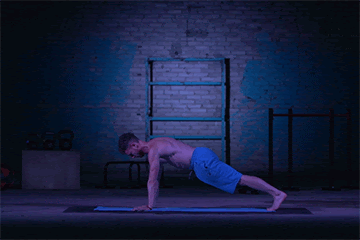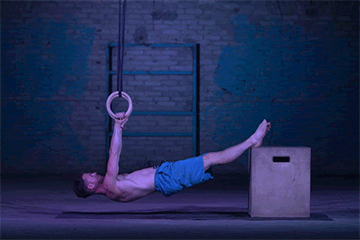Here’s one of the most underlooked muscle groups yet used in many movement patterns, strengthening exercises, which is why people are usually left injured.
💯Bulletproofing your rotator cuff is one of the best things you can do for your shoulder joint. This means following an effective rotator cuff strengthening routine to keep your rotator cuffs capable of movement and away from shoulder pain or rotator cuff tear.
Here we will discuss some exercises that can help strengthen your rotator cuffs and bulletproof them against injury.
In this article, we will cover some simple exercises that will help strengthen these important muscles and bulletproof them against injury – resulting in better shoulder performance and reduced risk of injury!
🤔What are the rotator cuff muscles?
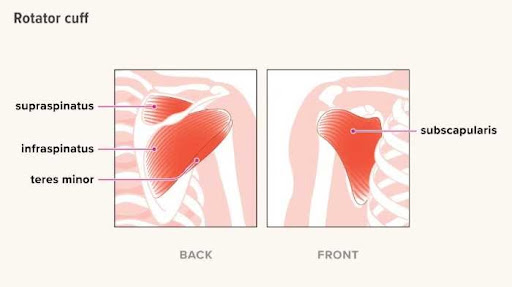
Here’s what the rotator cuff looks like. Thanks to Healthline for the image.
If you’re not familiar with what a rotator cuff does, it’s a group of four muscles that stabilize the head of the humerus in its socket on top of the shoulder blade.
These muscles are vital to protecting and stabilizing the joint, but they’re often injured by overuse or strain; this leads to pain and decreased performance.
The rotator cuff muscle also helps stabilize the shoulder blades (scapula) in many positions such as depression, elevation, protraction, and retraction. It also promotes a full range of motion for our upper arm and lets us perform movements such as external rotation, internal rotation, and shoulder abduction.
Brief Anatomy of the Rotator Cuffs
✔️ Supraspinatus – Assist in raising your shoulders
✔️ Infraspinatus – Shoulder rotation and extension
✔️ Teres minor – Main focus on external rotation
✔️ Subscapularis – Assist in shoulder rotation as well as extension and abduction
As you can already see, the rotator cuff plays a massive role in shoulder movement execution and stability which many movement patterns rely on.
🎯 If your rotator cuffs are bulletproof, you’ll have better pike push-up performance.
Stronger rotator cuff muscles mean stronger overhead pushing and reduced shoulder injuries and rotator cuff issues for life. From pull-ups, push-ups, bodyweight rows, handstands, and planche, the rotator cuff muscles are involved throughout the range of motion.
Although many upper body movements engage the rotator cuff muscles, indirectly working them out is not enough which can result in muscle imbalances.
☝️ Our focus will be on strengthening exercises for increased mobility and stability. Stretching exercises are in a different article that focuses on improving the passive range of motion.
Non-specific exercises for rotator cuff muscle can strengthen connected muscles which provide better shoulder movement, and stability and increase overall shoulder health so there’s also a combination of that.
Like any other muscle group, the rotator cuff cannot achieve its normal function if there are weaknesses along with connected tissues or muscles.
Rotator cuff tears are common among athletes, but they can also occur during day-to-day tasks for those who experience repetitive stress on their shoulders.
The good news is that these movements can prevent them from happening in the first place!👊
🔥What is a Rotator Cuff Injury?
Due to our regular movement, there is always a risk of injury. The risks increase when we are doing higher-impact movements that our body isn’t prepared to do.
Here are the general injuries you can get if you’re moving carefully enough:
Shoulder impingement – This is a common cause of shoulder pain that you get when your rotator cuff tendon is on adjacent tissues and bones when you lift your arm. Shoulder impingement is usually caused by repetitive movements that put unnecessary strain on your shoulder capsule. Impingement can be corrected (and prevented by rotator cuff exercises.
Rotator cuff tear – This one is the detachment of your rotator cuff tendons. Rotator cuff tears usually require surgical procedures for reattachment as they can cause severe shoulder pain, and very restricted movement of our injured arm. Torn tendons usually do not recover on their own even if it’s minor.
Weak rotator cuffs could also manifest as poor posture, neck pain, tight upper back, and lack of shoulder mobility.
Common rotator cuff injuries stem from strength, mobility, and strength deficits.
🤕 Injuries, or symptoms of potential injuries, can be further intensified by abusing the muscles and joint.
Choosing the right exercises to safely strengthen and mobilize the muscle group matters especially if you already have an injury.
Performing proper form to avoid rotator cuff injuries is still the best. Prevention is always better than cure.
Avoid overuse of your rotator cuffs by preparing them gradually.
🩺Seeking Professional Help
You shouldn’t feel pain with any movements at all. If there is an existing injury, gently move the affected arm to know the situation.
If pain persists, seek consultation with your local physical therapist to get a more accurate diagnosis of your situation. It’s too difficult to know if it’s your infraspinatus and teres minor muscles are problematic on your own. Don’t self-diagnose if severe pain exists.
Avoid moving the affected shoulder. Get a shoulder conditioning program that suits your current specific situation.
🎯 Best rotator cuff exercises for best performance and injury prevention
⚡️Pendulum exercise
Dr. Jo with the weighted pendulum for that extra gentle pull on your muscles.
This exercise is excellent for promoting movement in your shoulder joint while not any aggressive pressure or action on a potentially injured arm.
☝️Steps to perform
- Stand near an elevated flat surface like a table or chair.
- Hold a light weight with the arm you’re going to work on while your non-working arm holding on the elevated surface.
- While keeping it straight, gently swing the working arm side to side.
- Slowly rotate it and do a circular with the arm.
- Move your whole body in a circular motion while letting your working arm follow.
- Repeat with the other arm.
🎯Coaching tips:
- Let the arm hang freely
- Let the injured arm hanging but just slowly gauge your capacity for movement
⚡️Face pulls
The Bodyweight Process showing the top position of the ring face pulls.
Aside from building a strong posterior chain for a bigger looking back, face pulls are also fantastic for strengthening the rotator cuff muscles particularly the infraspinatus and teres minor.
You will feel your rear deltoids, middle trapezius and rhomboid are working also when performing the movement.
Although you can perform this exercise on a machine, it’s best to get a pair of gymnastics rings so that your shoulder joint and upper arm can move freely along its capable mobility.
☝️Steps to perform:
- Set up the rings appropriate for your level.
- Hang from the rings horizontally.
- Gently pull your body towards the rings then perform an external rotation so that your elbows are shoulder height.
- Reverse the motion until the elbow straight and back to starting position and repeat for reps.
🎯Coaching tips:
- Shoulder blades in full depression and retraction
- Control the full movement
- Core tight
- Posterior pelvic tilt
- Elbows in 90/90 position in the scapular plane
- Arm bent depending on what’s comfortable for you
- Lower the ring height or level of elevation in order to increase the difficulty of the exercise
⚡️Side-lying external rotations
Dr. Zion and Dr. Mizrachi demonstrating the starting position of the exercise.
External rotation is a common weak movement among people which opens up to the potential of injury. This exercise is perfect to understand and strengthen the external rotation.
This exercise can be done with a lightweight, elastic stretch band or with no weights at all.
☝️Steps to perform:
- Begin by lying on your side. Place a pillow on your head for comfort and a towel underneath your underarm to create space.
- Place your working arm on your midsection while holding a weight, elbow bent 90-degrees with an internal rotation.
- Begin lifting the weight slowly and pulling the arm outward until the weight is leveled with the elbow.
- Slowly move back to the start position and repeat for reps.
- Repeat the motions with the other arm.
🎯Coaching tips:
- Keep the load light
- Squeeze the towel underneath the arm to cue your muscles for the proper movement
- Maintain your body sideward and your elbow bent at 90 degrees during the movement
- Movement should not cause pain
- Expect tension on the upper arm as you get your rotator cuff rocked
⚡️Shoulder back lift
The exercise seems easy but it is way harder than it looks.
For this exercise, we’ll be working on the upper thoracic back section which works in conjunction with your shoulder blades. Any weakness in this area, the rotator cuff will suffer because of movement compensations.
This exercise is excellent for overhead mobility, strengthening the maximum range of motion you can perform which is also great if you want to work on handstands, but the benefit is general shoulder health which we are aiming for.
We want to work on your glenohumeral joint with this motion.
☝️Steps to perform
- Begin by lying on your stomach.
- Place your arms overhead.
- Externally rotate your arms.
- Gently draw them upward to the maximum range of motion.
- Lower down to the starting position and repeat for reps.
🎯Coaching tips:
- Set scapula first before moving the arms
- Moving only along the shoulder range of motion
- Aim to move your arms closer together every session
- Keep your arms straight
- Externally rotate your arm
- You can hold a stick horizontally or an elastic band to keep your arms steady when performing the movement
- Posterior pelvic tilt – try to make space between your stomach and the floor
⚡️Elastic stretch band external rotation at 90-90
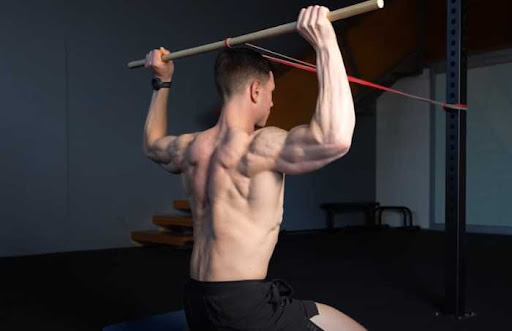
Daniel Vadnal of FitnessFAQs with the 90-90 band external rotation.
This requires a bit of a set-up but nothing really fancy. All you need is a set of relatively light resistance elastic bands and a sturdy stick.
Rotator cuff exercises are commonly supported on our elbows or the whole arm. This exercise trains us with unsupported elbows which strengthens us in our usual weaknesses. Gains from the band exercise transfer directly to real-world scenarios as most of the movements we perform in the real world don’t have us supported such as overhead pressing motions. Training for this exercise helps us get strong in the real world!
☝️Steps to perform
- Set up the band on an anchor point and the other end on a stick. Keep the height of the band a bit higher over your head when you kneel down.
- Move a bit further from the anchor point and start in a kneeling position.
- Engage your core and move your hips into a posterior pelvic tilt.
- Move your hands so that your elbows are bent at a 90-degree angle.
- Raise your arms to shoulder height.
- Externally rotate your shoulders so that your fist are above your shoulders.
- Pause at the top position.
- Lower down back until your arms are leveled with your shoulders.
- Repeat the motion for reps.
🎯Coaching tips:
- Depress your shoulders with full retraction
- Keep the motion controlled throughout the movement
- Scale the exercise by changing the bandwidth. Lighter bands are easier while heavier bands offer more challenge
⚡️Serratus push-ups
Minimal movement can be seen in the serratus push-up but take a closer look in the upper back area in this exercise preview.
The serratus anterior muscles help stabilize your shoulder blades. Weakness in this area could lead to instability in your rotator cuff so it’s best to prepare this muscle.
Aside from that, serratus push-ups promote stronger push-ups, dips, pull-ups, and many calisthenics skill movements which is why this exercise is essential even if you’re not specifically working on your rotator cuff muscles.
We’ll be doing a retraction by pinching your shoulder blades together with the exercise and protraction which is moving the shoulder blades away from each other.
☝️Steps to perform:
- Begin in a push-up position.
- Push down with your shoulder blades to push them apart.
- Slowly pinch them together.
- Repeat this motion for reps.
🎯Coaching tips:
- Elbows straight
- Engage your keep
- Keep a straight bodyline
- Regress the exercise by moving to your knees
- Move your shoulder blade to the maximum range of motion you current can perform
- For more advanced individuals, use a resistance band to increase the intensity
⚡️Bodyweight rows
This is the more advanced variation in which you can go into an inverted position with legs raised. Place your feet down and move further away from the anchor point to make the exercise easier.
Bodyweight rows AKA inverted pulls, Australian pull-ups aren’t a direct rotator cuff exercise but are commonly known as an excellent posterior chain builder in conjunction with a vertical pulling exercise such as pull-ups or chin-ups.
Begin more in a standing position when performing the exercise but move to a more horizontal body position as you grow stronger.
☝️Steps to perform:
- Prepare the gymnastics rings according to your skill level.
- Begin to hang on the rings horizontally.
- Pull your body towards the anchor point until your arms are close to your chest.
- Slight pause at the top position.
- Slowly lower down to the beginning position.
- Repeat for reps.
🎯Coaching tips:
- Shoulders depressed and retracted at all times
- Core engaged
- Posterior pelvic tilt
- Full-body tension
- Keep your elbows tucked close to your body
- Reset back until your elbow straight before performing another rep
📌Conclusion
Strengthening💪 and mobilizing the rotator cuff muscles isn’t only to avoid injury but it’s done so you can maximize the capacity of your shoulders and for overall general shoulder health.
Once you have built both strength and mobility on your rotator cuff, you’ll get much stronger in a lot of other movement patterns such as overhead pressing, push-ups, pull-ups, or even as simple as reaching your back when it’s itchy.
🔥Rotator cuffs need some loving and extra attention if you want to perform optimally and healthily. Rotator cuff tears can be avoided if you prepare your body and address potential weaknesses.
Bulletproof rotator cuffs help build your bulletproof shoulders. But it takes more than just capable cuffs in order to get healthy shoulders. Your shoulder muscle group is a complex musculature that requires extra attention if you want to stay pain-free and free of movement for life.
Improve your quality of life, prevent any pain as time goes by, and only get stronger, every session with the right shoulder routine.

